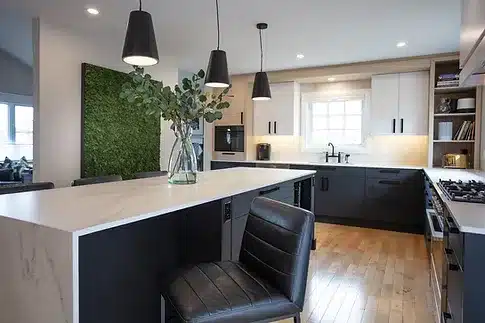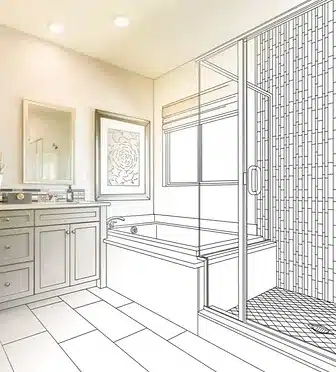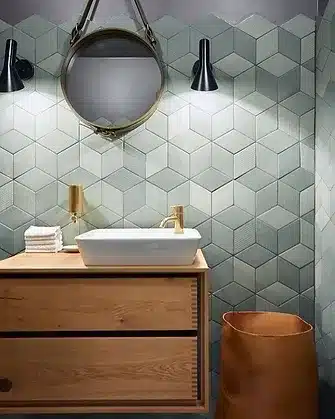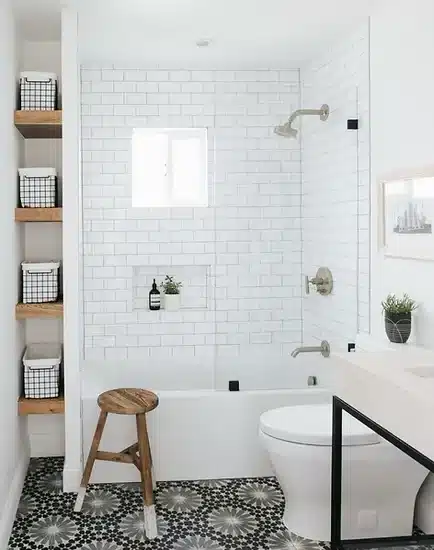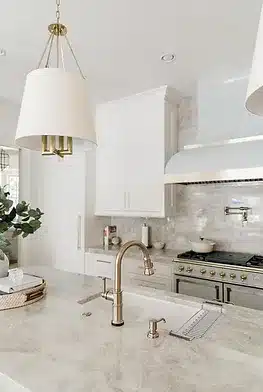The Definitive Guide to Elevate Your Kitchen Flooring Game
Discover the finest flooring solutions for your kitchen with our comprehensive guide. Explore a variety of top-notch options, ranging from elegant hardwood to durable tiles. Uncover the optimal materials, stay updated on the latest trends, and gather valuable tips to enhance your kitchen floor.
Choosing Your Kitchen Flooring:
A Simple Guide When giving your kitchen a makeover, picking the right flooring is crucial. With so many options like hardwood, vinyl, and tiles, it can be confusing.
This in-depth guide seeks to uncover a range of kitchen flooring materials, advancements, and technologies that promise to keep your kitchen floor both timeless and attractive for the long haul.
Within this guide, we’ll explore:
- Hardwood Elegance: Discover the enduring allure of solid hardwood and engineered wood floors.
- Tile Treasures: Uncover the grace of ceramic, porcelain, and natural stone tiles.
- Vinyl Versatility: Dive into the flexible world of luxury vinyl tile and sheet vinyl.
- Specialized Selections: Embrace sustainable options such as cork flooring, bamboo flooring, and stained concrete.
- Expert Installation: Elevate your flooring with professional installation, ensuring top-notch quality and durability.

Strength and Longevity
When choosing materials for your kitchen floor, durability takes center stage. With constant foot traffic, the weight of heavy appliances, and the daily grind, it’s crucial to opt for a flooring material that can withstand the challenge. Below is a comparative table showcasing the durability of some popular options:
- Hardwood Elegance: Solid hardwood floors and engineered wood flooring boast natural grain patterns and timeless charm. However, to maintain their rich brown hues, these options may require additional upkeep.
- Tile Resilience: Ceramic and porcelain tiles stand out for their exceptional durability and water-resistant properties. Natural stone tiles elevate the luxurious feel of your space.
- Vinyl Versatility: Luxury vinyl tile offers a comfortable underfoot experience and comes in a plethora of styles. On the other hand, sheet vinyl presents a cost-effective flooring option.
- Bamboo Beauty: Crafted from pulped bamboo, this sustainable material is gaining popularity for its unique aesthetic.
- Cork Comfort: Combining ground-up cork with other natural materials, cork flooring provides a distinctive and soft underfoot experience.

Water Resilience and Waterproof Solutions:
- In the kitchen, water resistance isn’t just a desirable feature; it’s an absolute necessity. From dishwashing to unexpected spills, kitchen floors must be resilient to moisture.
- Totally Waterproof Choices: Luxury vinyl tile, porcelain tiles, and stained concrete stand out as completely waterproof options, ensuring they remain ideal choices for any kitchen.
- Water-Resistant Alternatives: Certain hardwood flooring with specialized finishes, engineered wood flooring, and natural stone possess water-resistant qualities, although they may benefit from additional care to maintain their resistance over time.
Mastering Your Kitchen Flooring Budget
Budgeting for kitchen flooring spans a spectrum, ranging from economical laminate choices to luxurious natural stone alternatives. Factors to ponder encompass per-square-foot expenses, professional installation fees, and the ongoing maintenance over the long haul.
- Cost-Effective Choices: Laminate flooring and sheet vinyl emerge as pocket-friendly options.
- Upscale Selections: Solid wood floors and natural stone tiles represent premium choices for those aiming to invest in lasting elegance.
Exploration of Best Flooring For Kitchen Choices: A Comprehensive Review
Advantages and Disadvantages of Hardwood Flooring
Pros:
- Boasts a natural and elegant appearance
- Available in a wide array of shades and finishes
- Solid hardwoods offer the option for refinishing
Cons:
- Demands regular maintenance for optimal longevity
- Not entirely waterproof, requiring caution in moisture-prone areas
- Comes with a higher cost compared to certain alternative flooring options
Advantages and Disadvantages of Tile Flooring for the Best Flooring For Kitchen
Pros:
- Lots of Styles: Tiles come in many styles and finishes, giving you plenty of options to choose from.
- Water-Resistant: Especially porcelain tiles, they’re great for areas where there’s moisture. Good for places with lots of people walking around.
Cons:
- Grout Cleaning: The lines between tiles (grout) might need regular cleaning to keep things looking nice.
- Cold and Hard: Tiles can feel cool and hard when you walk on them, which might not be comfy.
- Pro Installation: For the best results, it’s a good idea to have a professional install your tile flooring.
Advantages and Disadvantages of Vinyl Flooring
Pros:
- Budget-Friendly and Flexible: Vinyl flooring stands out for its affordability and versatility, making it a practical choice for various spaces.
- Water and Stain Resistant: Enjoy the convenience of vinyl’s resistance to water and stains, making it a durable option that’s easy to clean.
- Low Maintenance: With minimal upkeep demands, vinyl flooring is a hassle-free choice, saving you time and effort.
Cons:
- Moderate Durability: While resilient, vinyl may not match the durability of some other flooring materials, so it’s important to consider the wear and tear in high-traffic areas.
- Sunlight Sensitivity: Be aware that vinyl may fade over time when exposed to direct sunlight, requiring consideration in areas with ample natural light.
- Professional Touch: For a flawless look, professional installation may be necessary to achieve a seamless appearance, ensuring a polished and lasting result.

Guidance from Professionals:
Tips for Maintaining Hardwood Floors
To keep your hardwood floors looking great, it’s important to take care of them. Avoid letting direct sunlight hit them too much because it can make them change color. Put special pads under heavy things, like appliances, to stop scratches. If there’s a lot of people walking in an area, using rugs can help prevent wear and tear. Doing regular small cleanups can make your hardwood floors last longer, making them a good choice for a long-lasting floor.
Tips for Maintaining Tile Floors
Tile floors, like ceramic and natural stone, need special attention. Keep grout lines clean to avoid stains, and enhance the durability of natural stone tiles by sealing them. Use gentle cleaners to keep your tile floors shiny. In the kitchen, choose a strong tile that can handle daily use to keep it looking good.
Tips for Maintaining Vinyl Floors
Vinyl floors, like luxury vinyl plank, are versatile and easy to take care of. To keep them looking good, avoid strong chemicals and sweep regularly. Use gentle cleaning tools to prevent scratches, making vinyl floors a great pick for busy areas.
Conclusion
Picking the Best Flooring For Kitchen is a crucial step in any kitchen makeover. Whether you love the timeless warmth of hardwood, from solid to engineered, or the modern charm of luxury vinyl tile, understanding their unique features, durability, and water resistance is key. This knowledge ensures that your kitchen floor not only looks good but stays stylish and functional for a long time.
Whether you’re into the natural beauty of wood, the practicality of tiles, or the cool designs of luxury vinyl, this guide has all the info to help you choose the perfect flooring that suits your style, budget, and needs. With choices ranging from super waterproof materials to eco-friendly options like bamboo or cork, you can confidently make a decision that boosts your kitchen’s appeal and stands up to the test of time.Your kitchen is the heart of your home, and it deserves a design that reflects your lifestyle, taste, and needs. Whether you’re planning a full kitchen remodel or just exploring your options, our team is here to guide you every step of the way. Schedule your Free Consultation today and let us help you create a kitchen that combines lasting quality, modern functionality, and timeless style built to suit you and your family for years to come.

